
Piercing the veil
A new exhibition at Buxton Contemporary finds a rich complexity in the shadowy terrain between life and death.
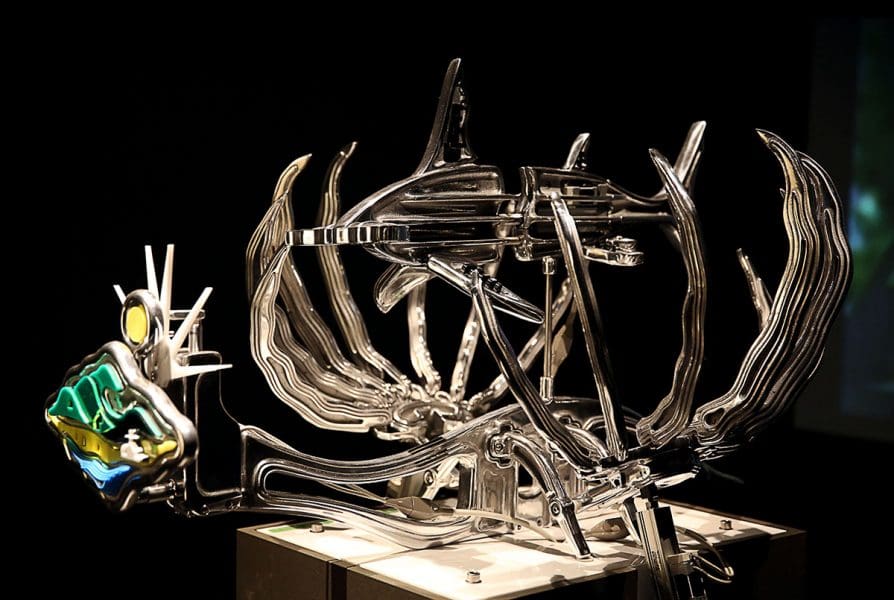
Ken Thaiday with Jason Christopher, Beizam Triple Hammer Head Shark, 2016, Cast aluminium, stainless steel, aluminium extrusion, steel, Perspex, rubber, electronic components, computer system, audio, 3500x2800x2800mm. Courtesy of the artists. Photograph: Jason Christopher.
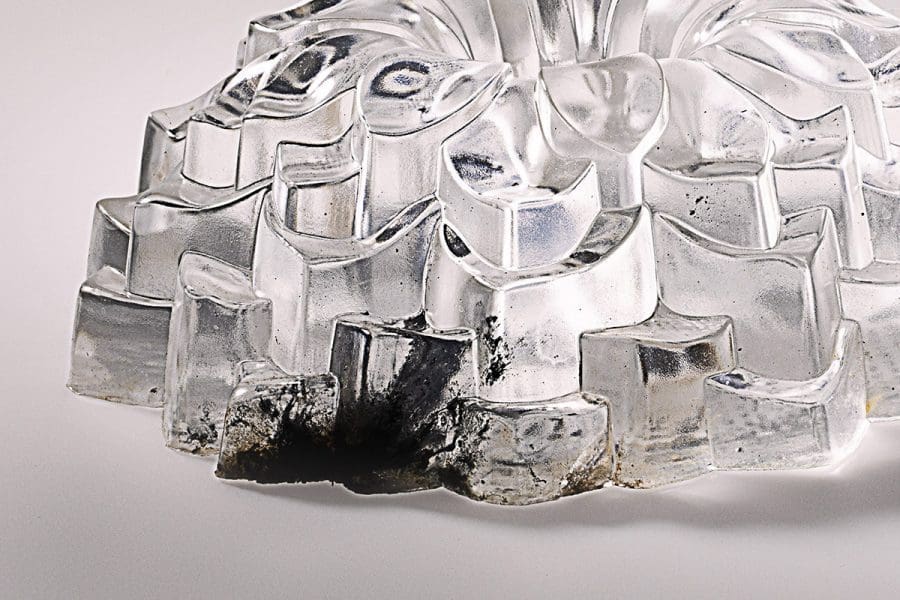
Lindsay Kelley, Ballistic Bundts, 2018, Ballistic gel and expended bullets, dimensions variable. Courtesy of the artist. Photograph: Marinco Kojdanovski.
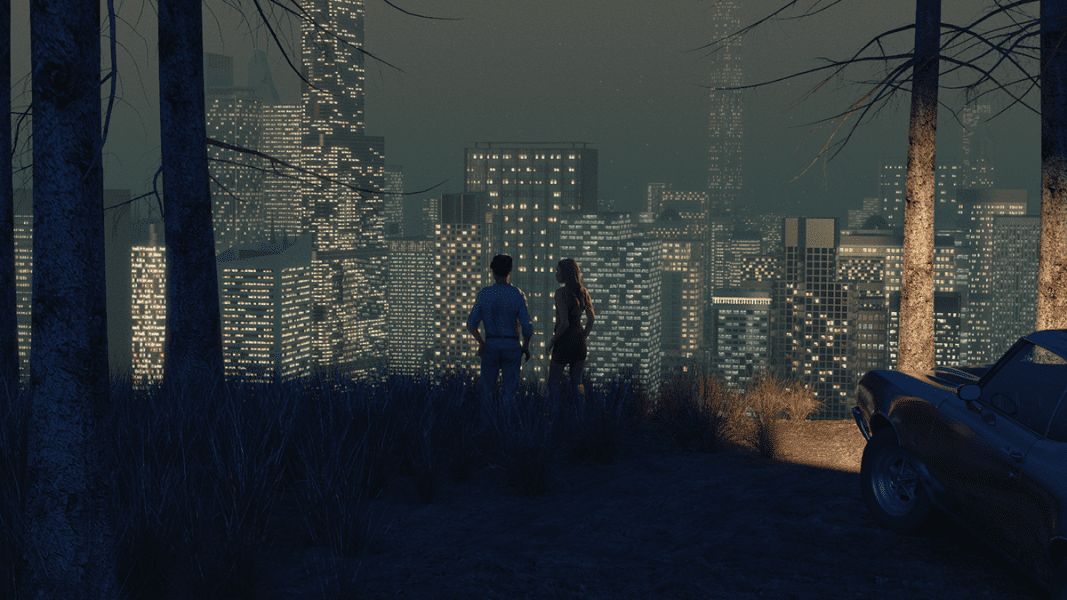
Liam Young, Still from Renderlands, 2018, HD video, 1920x1080dp, 10 minutes. Courtesy of the artist.
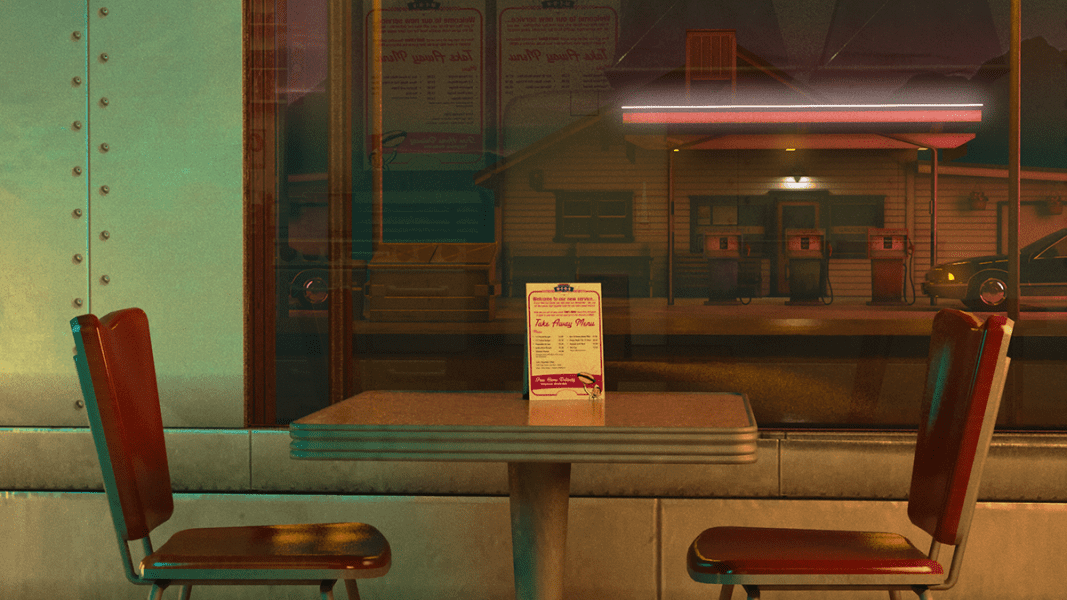
Liam Young, Still from Renderlands, 2018, HD video, 1920x1080dp, 10 minutes. Courtesy of the artist.
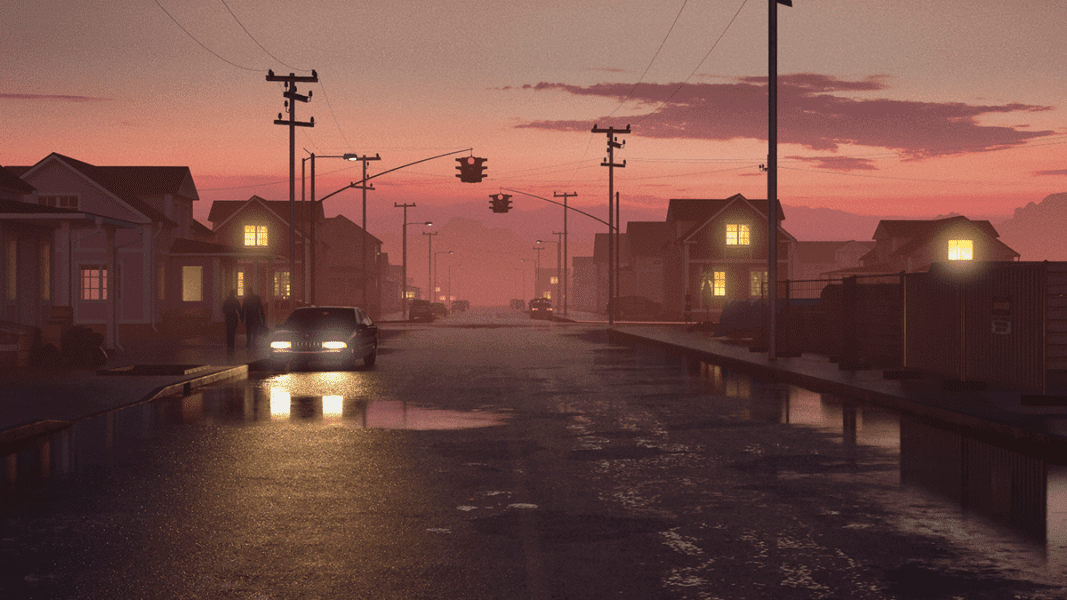
Liam Young, Still from Renderlands, 2018, HD video, 1920x1080dp, 10 minutes. Courtesy of the artist.

Maria Fernanda Cardoso, The Marriage of Plants, 2018, deep focus photography, light boxes, preserved flowers, variable dimensions. Courtesy of the artist.

Maria Fernanda Cardoso, The Marriage of Plants, 2018, deep focus photography, light boxes, preserved flowers, variable dimensions. Courtesy of the artist.
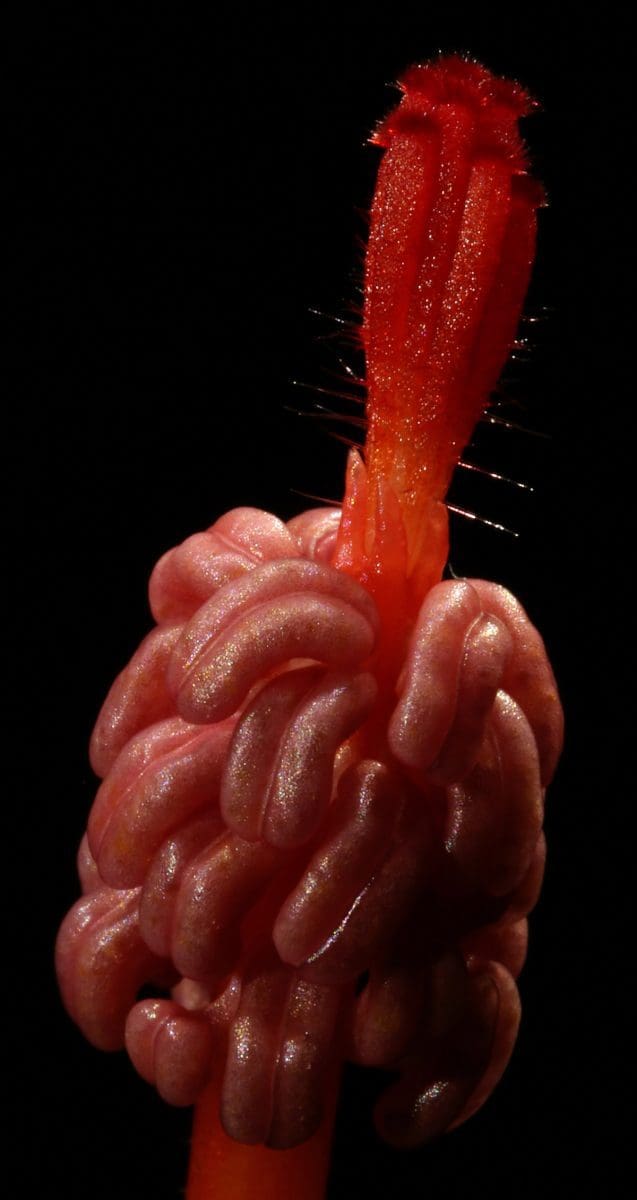
Maria Fernanda Cardoso, The Marriage of Plants, 2018, deep focus photography, light boxes, preserved flowers, variable dimensions. Courtesy of the artist.
In the group show Human non Human, the question of what it is to be human is tackled by five artists who actively engage with technology and/or the tropes of science: Maria Fernanda Cardoso, Lindsay Kelley, Ken Thaiday with Jason Christopher, and Liam Young.
In her installation of large-scale micro-photography Maria Fernanda Cardoso draws our attention to this fact. Her huge, super saturated and back-lit colour pictures of pistils and stamens highlight the stunning array of shapes and sizes that the reproductive organs of plants come in. And human in scale, these flowers also serve to draw attention to just how boring and homogenous our own sexy-bits are in comparison.
Lindsay Kelley presents a glistening selection of delectable looking inedible ‘cakes.’ Clear and shiny, at first glance they resemble cut crystal. Kelley’s ‘cakes’ are beautiful, but they have a sinister and macabre edge. They are cast in elaborate Bundt moulds from ballistic gel, a military material, designed for weapons testing, which is meant to mimic the consistency of human flesh.
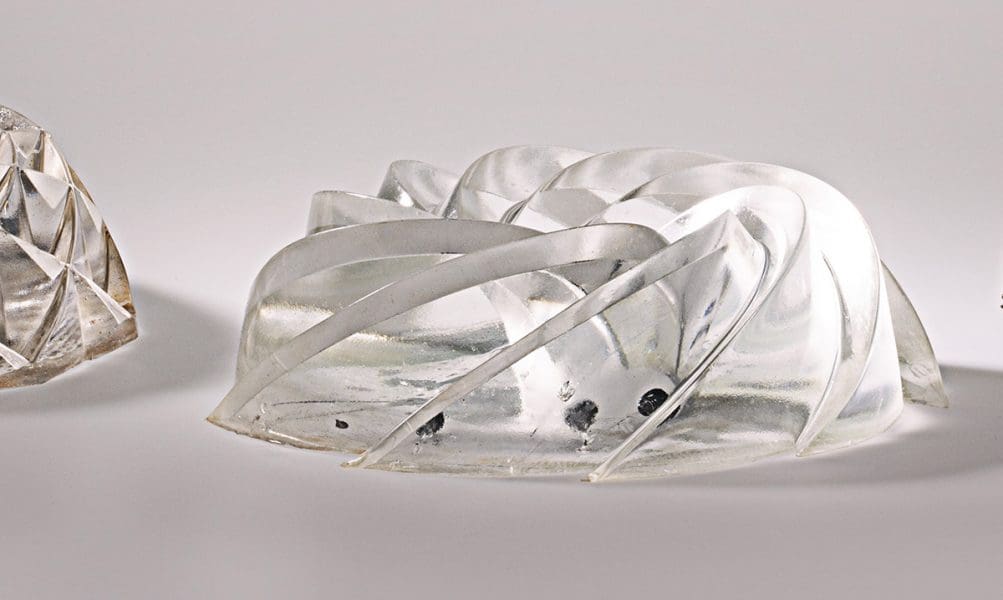
Each ‘cake’ has been shot and the trajectory of the bullets has left visible scars in the artificial flesh. The artist’s installation, complete with kitchen sink, blurs the boundary between the domestic sphere and the military industrial complex. In this way, her jiggly wiggly ‘cakes’ give new meaning to the well worn phrase, ‘You are what you eat.’ They highlight the role of warfare in driving new technology – innovations which often end up in the home, such as the internet and canned vegetables – while also pointing to the complicity we share in government sanctioned martial atrocities; actions carried out in our names as we sit safely at home.
Their forms are based on ceremonial headdresses, but Thaiday’s animatronic objects perform a new kind of dance, with or without an audience. Through his collaboration with Christopher, Thaiday provides evidence, yet again, that Indigenous culture is a living culture: resilient, adaptable and ongoing.
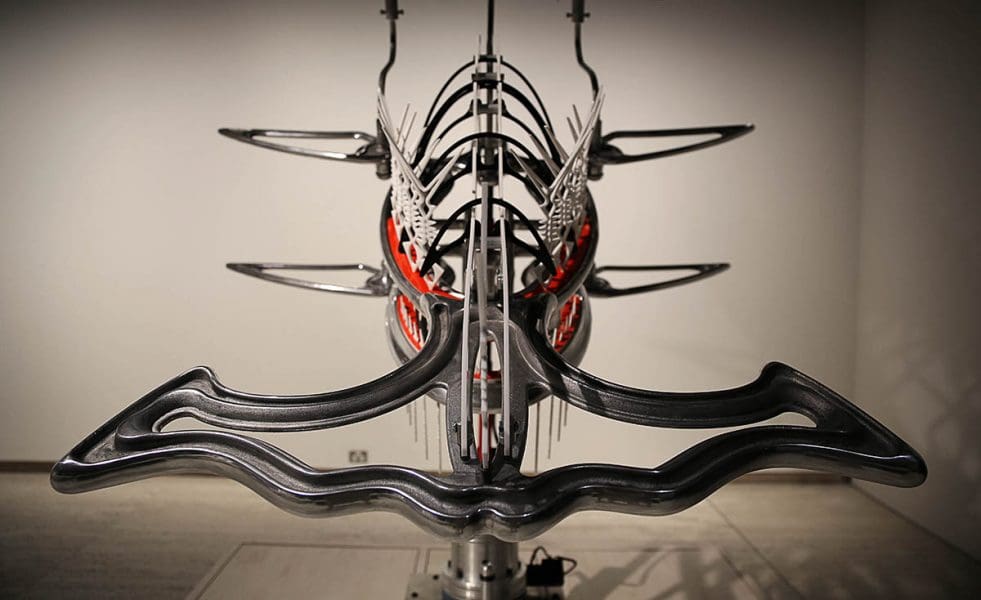
In his Renderlands project, Liam Young focuses on the seductive appeal of digital worlds and on the workers in India who animate many of the fantasies we see on our screens. In his quasi-documentary films, Young presents the lives of pixel-wranglers who work around the clock to render special effects in blockbusters or animate the busty babes and brawny brutes that populate Western games; all at a fraction of the cost. Far from the glamour of Hollywood (or even Sydney) the labour of these workers is barely acknowledged, let alone celebrated.
Trying to come to terms with the human condition has occupied both artists and philosophers for millennia. What is it to be human? As Human non Human demonstrates, it’s a question that defies simple answers.
Human non Human
Powerhouse Museum (MAAS)
7 August – 27 January 2019